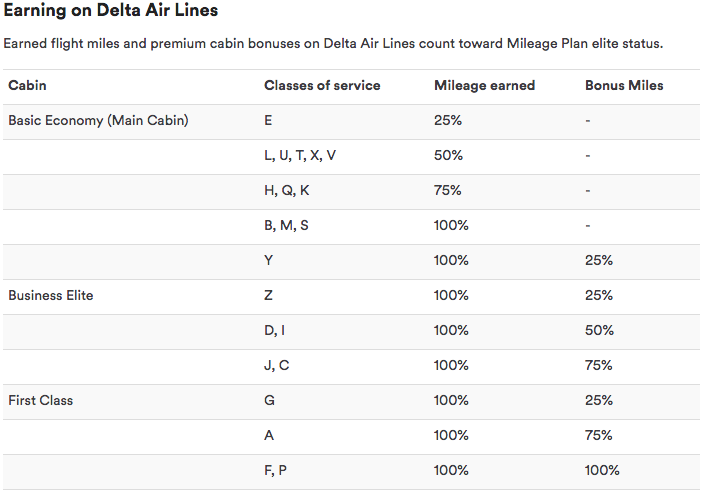With news that American Airlines is drastically cutting the benefits of its AAdvantage loyalty program — fewer upgrades, fewer miles, and a new spending requirement for earning elite status — I’ve received several emails and comments from readers wondering if they should switch carriers.
American Airlines is one of the four largest traditional U.S. carriers. The other three are United Airlines, Delta Air Lines, and Alaska Airlines (including its pending purchase of Virgin America). Personally, I don’t think there are meaningful advantages to American’s loyalty program when compared to United and Delta. All three are about the same, though my subjective view is that United and Delta’s loyalty programs marginally better. The service and networks of these competitors are also better. United had some work to do, but it’s improving. American still has numerous issues remaining from its merger with US Airways.
Why Alaska Airlines?
Although the Big Three are all pretty similar, this post will focus on Alaska Airlines as an alternative for two main reasons. First, its program is still based on distance flown and the award chart has not had any major devaluations in recent years (with the exception of business and first class awards on Emirates). This makes it a unique value proposition.
The second reason is that Alaska and American have a partnership agreement so you can continue flying on American Airlines planes while crediting those flights to Alaska Mileage Plan as well as take advantage of reciprocal elite benefits. They also share some international partners including Cathay Pacific, British Airways, and JAL.
Earning Status on Alaska
If you switch to Alaska Mileage Plan, you might try to earn status and retain some benefits when traveling with them or with their partners (including Delta and American). The base level MVP status requires 20,000 elite qualifying miles each year or 40,000 elite qualifying miles for MVP Gold. Top-tier MVP Gold 75K status requires 75,000 elite qualifying miles.
However, I’m assuming you’ll be crediting some partner flights to earn this status, right? Those low numbers are only if you count flights operated by Alaska Airlines and Horizon Air. With partner flights added to the mix, thresholds increase to 25,000 EQM, 50,000 EQM, or 90,000 EQM. That’s still easier than on American with no elite qualifying dollars to worry about.
Status matches are available. Just send an email to elite.flyer@alaskaair.com to ask for more information. The elite membership year runs through December 31 of each year. If you want your match to last through all of next year, you may want to delay your match until October.
Reciprocal Elite Benefits
Most likely you’ll be trying to keep flying on American Airlines even as you’re crediting flights to Alaska, whether just to earn award miles or also in the hope of earning Mileage Plan elite status. You can still take advantage of your elite benefits on American Airlines-operated flights.
When using your Alaska Mileage Plan status on American Airlines, these perks include:
- Priority check-in and boarding
- Complimentary preferred seating
- Express security lines at select airports
- Complimentary Main Cabin extra seating for MVP Gold and MVP Gold 75K members
- 50% off Main Cabin extra seating for MVP members
- One free checked bag for MVP members
- Two free checked bags for MVP Gold and MVP Gold 75K members
Similar benefits apply if you already have American AAdvantage status and want to use it on Alaska Airlines. However, to be eligible for reciprocal benefits you must have your loyalty program number linked to your reservation. If you want the benefits of being an Alaska Airlines elite member, you will also have to earn Alaska Airlines miles.
Learn more about the benefits of Mileage Plan elite status on American Airlines and other partners.
How Many Miles Will You Earn?
Alaska Airlines awards between 100% and 175% of the distance flown on its own planes, depending on the fare class. Elite members earn a bonus between 50% and 125%, as well, which applies to Alaska Airlines flights and partner flights.
Shortly after Delta implemented a revenue-based award chart, Alaska responded by adjusting its earning rates for Delta-operated flights. Although still based on distance, it adjusted the percentages so that first class fares earned much more and cheap economy fares earned much less. It’s a weak substitute for a revenue-based program that still provides some opportunity to score a cheap fare that might be treated as one more expensive.
Here’s what the Delta earning chart looks like when flights are credited to Alaska Mileage Plan.
I expect Alaska to make similar changes to the American Airlines earning chart at some point. Meanwhile, here’s what the current American earning chart looks like when flights are credited to Alaska Mileage Plan.
Alaska and Delta made changes to how each program awards miles for travel on Delta-operated flights at the same time, effective January 1, 2015. However, Delta’s news broke in February 2014. It took nine months before Alaska announced its change in November.
I don’t think Alaska can move quickly enough to make a similar change to earning miles on American Airlines and put it into effect at the same time, but it at least has a previous example to learn from. With American’s new revenue model going into action in August of this year — just two months away — I expect Alaska to make changes as soon as September and almost certainly by the end of this year.
You Don’t Need Status to Justify a Switch
Some people have already declared that they’re giving up status and loyalty altogether. That’s fine. But you’ll still fly on American Airlines occasionally and will need to put the miles somewhere.
If you credit your flights to American AAdvantage, you’ll earn them based on revenue, so you’ll probably earn less. When you go to redeem them you’ll face an award chart that has significantly devalued since last year. Although you can mix and match carriers on a single award, American has some other funky restrictions on using miles.
If you credit your flights to Alaska Mileage Plan, you’ll earn them based on distance, though Alaska will probably adopt a strategy similar to what it did when Delta made a similar switch. Distance, yes, but weighted by fare class. It’s still a rough approximation of a revenue-based program.
However, I’d also argue that Alaska’s award chart is more rewarding, with lower prices and free stopovers. Even earning fewer miles can be tolerable if those miles are more valuable than American’s








